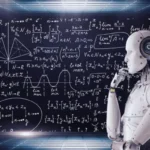
Gaming Trends: The Future of Gaming Tech & Culture in 2024
October 31, 2024
Artificial Intelligence In Education
November 10, 2024The adoption of Generative AI is a revolution in the creative field because it has expanded possibilities in art, writing, and designing. Besides, many algorithms combined with big data can create new content that seems to have been created by AI, but in fact, exceeds a person’s creativity in terms of speed and outcomes. captioning tools such as DALL-E, ChatGPT, and Midjourney is revolutionising artists to create complex forms and images within a few seconds, providing writers with sensible ideas to construct plausible narratives and offering designers impeccable prototypes that are complex and easily executable.
Of course, with generative AI, these fields are changing as well, and this transformation raises inquiries about the originality, tactility, and morality of generative AI.
This article discusses how generative AI is transforming creativity in artworks to questioning the essence of creativity, and more than expanding new creative possibilities, it discusses the positivism and scepticism with AI in the coming creative era.
1. Generative AI in Art: A New Creative Frontier
Generative AI-Assisted Creativity and Speed
Describe how generative AI helps to enhance the speed of different generative creations. artists and Programmers can combine creativity through applications that help them to come up with ideas faster, such as applying AI to generate images from text descriptions, or even taking a painting of Van Gogh and applying it to modern life images, and so on. Explain how with artificial intelligence one can generate hundreds of unique designs in minutes instead of days or weeks, as is the case with standard approaches.
Expanding the Palette
AI has shown that art can and will move in new directions. This is why I have to mention such applications as GANs (Generative Adversarial Networks) when it is possible to generate complex images, 3D models and animations. Installation artists and those working with augmented reality also employ AI to design installations that would be impossible otherwise.
Case Studies in AI Art
Cite the following works of AI: Edmond de Belamy, the portrait made by AI that was sold for over $400,000 and compositions by AI artists like Mario Klingemann. These can all be used to show how AI art has penetrated galleries and even auctions to disrupt conventional thinking on art.
Ethics and Originality in AI Art
More on the debate of intellectual property since the new AI models are trained on existing artworks. Review current and progressive legislation with possible remedies.
2. Generative AI in Writing: From Drafts to Final Edits
Content Creation and Efficiency Gains
What tools can writers use to generate articles, blogs, marketing content, and social media posts? I encourage you to show how using tools such as Jasper or ChatGPT helps speed up the creation process, particularly when writing often tedious amounts of content.
Idea Generation and Brainstorming
Explain how published articles describe how AI assists writers in dealing with creative stagnation. With the help of keywords, the tone, and the style of the text being analyzed, AI can propose headlines, topics for the article, or even plots for fiction.
Promote tools such as Sudowrite that concentrate on the development of story plot and conceiving.
Editing and Language Optimization
It Describes how the generative chatbot aids in editing by providing options as to the correct grammar to use, the right tone to take, better words to use and so on. Applications like Grammarly and Copy.ai help journalists fix their text for clarity, engagement level, and grammatical accuracy which is so vital when writing for audiences of non-English background.
Bias and Ethical Concerns in AI Writing
Suggest potential problems, for example, that of producing preconceptions or representing false information. Due to this, AI models often mirror prejudice or other distortions that exist in the text. Describe actions being taken to increase the transparency and the responsibility of AI writing tools.
Case Studies of Generative AI in Journalism and Content Marketing
The news outlets that are using AI for automatic news digesting and data-driven reporting are Reuters and The Washington Post. Emphasize how AI helps in content marketing to create a targeted approach based on data highlighting audiences to revolutionize the way companies interact with clients.
3. Generative AI in Design: Innovation Meets Automation
Rapid Prototyping and Iteration in Design
AI explains how the use of artificial intelligence helps designers develop many designs at a given period. Some of the tools that can help you are Figma, Canva, Adobe Sensei where ideas can be presented and entire templates with colors and images can be proposed by the system and, therefore, they help to work on a concept with clients and present them with various options for layout so that they can make decisions based on them.
Personalized and Dynamic Designs
It describes how design algorithms are developed to generate unique designs based on certain user specifications. For instance, several e-commerce platforms employ artificial intelligence in the development of recommendation systems for products, dynamic ads and other interface graphical features that depend on user information. It is making changes in industries such as fashion and interior designing for which personalization is turning into a new trend.
AI in Visual Storytelling and Brand Building
Learn how brands employ AI-generated visuals in a way that maintains cohesive visual language across multiple applications. AI tools quickly generate pictures corresponding to the brand’s hue, tone, aspect, and emotion, thus, improving brand narration. This process has become so helpful in making consistent social media posts, adverts, and packaging.
Bridging the Gap Between Technical and Creative Skills
During design generation, AI works on the creation of the design while designers shallow their role in selection, optimization and ensuring that design solutions relay with brand attributes and usability. Explain how this change allows designers to focus on the qualitative, people-oriented concept of design to the extent that they no longer have to perform qualitative tasks.
4. Specific Difficulties and Unresolved Ethical Questions in All Fields of Creativity
Originality vs. AI-Assisted Creation
Emphasize the problem between elaborating new articles and developing articles created with the help of AI. On the positive side, the use of AI will bring more efficiency into the process, however, on the other hand, it will decrease the individuality of the artist’s work. In the creative audience input and AI input, artists and writers face challenges in modulating the output.
Cultural and Societal Impact
Artificial intelligence is now altering the consumer experience of art, design, and literature. AI technologies shift the perception and appreciation of audiences for creativity by posing the susceptibility to AI but the essence of the creative essence, the unique decision of the creator.
Environmental Concerns
Further, to generate proficiency in tractable generative AI models takes a large number of computations that consume more energy. Explain what measures are tied to the promotion of the carbon footprint connected with training and using these models and the demands for greener AI practices in the creative sector.
Intellectual Property Laws and Policy Development
With generative AI being increasingly involved in creative activities, laws on the ownership and authorship of creations are being adapted to fit realities. Explain the need for the formulation of policies for the rights and compensation of creations through artificial intelligence.
5. The Future of Generative AI and Creativity
AI as a Creative Assistant, Not a Replacement
Stress on the opportunity where people will work with AI as the tool to amplify the creativity of the person. Employing artificial intelligence in such chores relieves artists, writers, and designers of technical work and allows them time to innovate, and express stories, and feelings.
Inclusive Creativity and Democratization of Art and Design
Since AI brings creative tools to a more reachable level, a stranger to art education can join in the creative process. Moreover, AI offers efficiency, but it risks diluting personal artistic expression. Artists and writers grapple with balancing their creative input and AI’s contributions.
Cultural and Societal Impact
AI-generated content is influencing public perception of art, design, and literature. The availability of AI tools changes how audiences view and value creativity, raising questions about the role of human touch and intentionality in creative work.
Environmental Concerns
Generative AI models require substantial computational resources, leading to high energy consumption. Discuss the carbon footprint associated with training and using these models and the push for more sustainable AI practices in creative industries.
Intellectual Property Laws and Policy Development
As generative AI becomes more integrated into creative processes, intellectual property laws are evolving to protect human creators and manage the ownership of AI-generated works. Discuss the development of policies to address rights, compensation, and accountability in AI creations.
Conclusion
In conclusion, Generative AI is revolutionising art, writing, and design by presenting new opportunities, organizing production processes, and developing new kinds of art. Handy as these tools are for both professionals and amateurs these challenges pertain to issues such as novelty, ethics, and the human factor in creativity.
Moving to the next level requires acceptance of non-AI-generated creations as artistic expressions and AI as tools for human creativity that bring about the connectedness of the human and artificial intelligence systems in a way that can be responsibly endorsed as value-added, without diminishing the value of artistic creations across and beyond culture and time.




